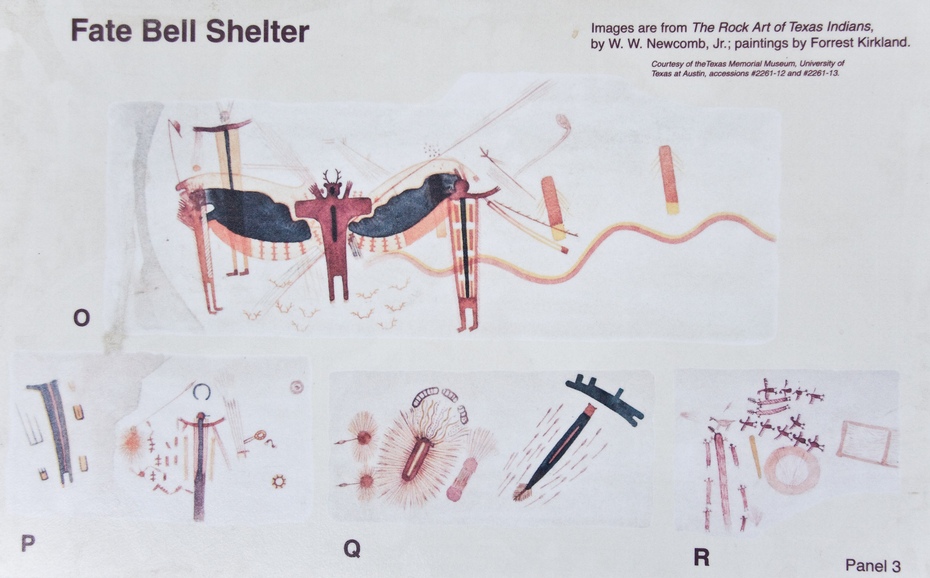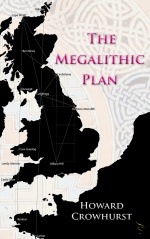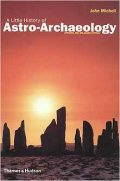<< Our Photo Pages >> Seminole Canyon State Park and Historic Site - Rock Art in United States in The Southwest
Submitted by davidmorgan on Monday, 21 September 2015 Page Views: 8872
Rock ArtSite Name: Seminole Canyon State Park and Historic Site Alternative Name: Panther Cave, Fate Bell Shelter, Black CaveCountry: United States Region: The Southwest Type: Rock Art
Nearest Town: Del Rio Nearest Village: Comstock
Latitude: 29.662013N Longitude: 101.313054W
Condition:
| 5 | Perfect |
| 4 | Almost Perfect |
| 3 | Reasonable but with some damage |
| 2 | Ruined but still recognisable as an ancient site |
| 1 | Pretty much destroyed, possibly visible as crop marks |
| 0 | No data. |
| -1 | Completely destroyed |
| 5 | Superb |
| 4 | Good |
| 3 | Ordinary |
| 2 | Not Good |
| 1 | Awful |
| 0 | No data. |
| 5 | Can be driven to, probably with disabled access |
| 4 | Short walk on a footpath |
| 3 | Requiring a bit more of a walk |
| 2 | A long walk |
| 1 | In the middle of nowhere, a nightmare to find |
| 0 | No data. |
| 5 | co-ordinates taken by GPS or official recorded co-ordinates |
| 4 | co-ordinates scaled from a detailed map |
| 3 | co-ordinates scaled from a bad map |
| 2 | co-ordinates of the nearest village |
| 1 | co-ordinates of the nearest town |
| 0 | no data |
Internal Links:
External Links:

Seminole Canyon State Park and Historic Site in Val Verde County, west of Comstock, contains 2172.5 acres; the park was acquired by purchase from private owners in 1973 - 1977 and opened in February 1980.
Early man first visited this area 12,000 years ago, a time when now-extinct species of elephant, camel, bison, and horse roamed the landscape. The climate at that time was more moderate than today and supported a more lush vegetation that included pine, juniper, and oak woodlands in the canyons, with luxuriant grasslands on the uplands. These early people developed a hunting culture based upon large mammals, such as the mammoth and bison. No known evidence exists that these first inhabitants produced any rock paintings.
By 7000 years ago, the region had undergone a climatic change that produced a landscape much like today's. A new culture appeared in this changed environment. These people were increasingly dependent on gathering wild plants and hunting small animals and less dependent on hunting big game. They lived in small groups since the land would not support larger social units for long periods.
Despite the struggle for survival, some of these prehistoric people found the creative energy to paint the pictographs found in Fate Bell and other rock shelters of the Lower Pecos River Country. The distribution of this distinct style is limited to a district which includes a portion of the Rio Grande, Pecos, and Devils River. More than 200 pictograph sites are known to contain examples of their style of rock paintings ranging from single paintings to caves containing panels of art hundreds of feet long. Although numerous figures or motifs are repeated in different locations, the exact meaning of the paintings is buried with the people who painted them.
The Fate Bell Shelter Tour is held daily Wednesday through Sunday. Tours are subject to cancellation due to rain or hot temperatures. The Fate Bell Shelter Tour involves a fairly-rugged hike to the bottom of the canyon and then up to the shelter to view many good examples of American Indian rock paintings in Fate Bell Shelter.
Park staff & volunteers with the private, nonprofit Rock Art Foundation conduct tours of the Fate Bell Shelter, continuing the group's history of support for the site. The shelter is a huge cliff overhang containing some of the state's most spectacular American rock paintings.
More on the official web site of the Seminole Canyon State Historical Park.
Note: The 2015 Rock Art Foundation Annual Rendezvous, Oct 16-18th, Comstock, Val Verde, Texas
You may be viewing yesterday's version of this page. To see the most up to date information please register for a free account.






Do not use the above information on other web sites or publications without permission of the contributor.
Click here to see more info for this site
Nearby sites
Click here to view sites on an interactive map of the areaKey: Red: member's photo, Blue: 3rd party photo, Yellow: other image, Green: no photo - please go there and take one, Grey: site destroyed
Download sites to:
KML (Google Earth)
GPX (GPS waypoints)
CSV (Garmin/Navman)
CSV (Excel)
To unlock full downloads you need to sign up as a Contributory Member. Otherwise downloads are limited to 50 sites.
Turn off the page maps and other distractions
Nearby sites listing. In the following links * = Image available
17.5km N 9° Little Sotol Ancient Village or Settlement
28.2km NNW 334° Hinds Cave Cave or Rock Shelter
30.3km ENE 72° Delicado Shelter Rock Art
194.0km ENE 76° Stonehenge II (Original Location)* Modern Stone Circle etc
197.1km W 272° Bee Cave Canyon* Cave or Rock Shelter
204.2km ENE 77° Stonehenge II (Ingram, TX)* Modern Stone Circle etc
257.6km ENE 68° Enchanted Rock* Natural Stone / Erratic / Other Natural Feature
266.2km NNW 339° UTPB Stonehenge Replica* Modern Stone Circle etc
298.9km ENE 68° Nightengale Archaeological Center* Ancient Village or Settlement
306.6km SSW 194° Cuatro Cienegas Footprints Ancient Trackway
327.3km E 85° Spring Lake Ancient Village or Settlement
377.1km ENE 68° Gault Site Ancient Village or Settlement
378.4km ENE 68° Debra L. Friedkin Ancient Mine, Quarry or other Industry
407.6km S 171° Boca de Potrerillos Rock Art
516.4km WNW 300° Hueco Tanks State Park & Historic Site* Rock Art
528.6km NE 48° Caelum Moor* Modern Stone Circle etc
547.0km NNW 340° Blackwater Draw* Museum
549.1km NE 46° The Flower Mound Natural Stone / Erratic / Other Natural Feature
551.3km WNW 295° Caballo Blanco de Juárez Hill Figure or Geoglyph
572.2km E 88° Houston Museum of Natural Science* Museum
590.6km NW 308° Fossilized Footprints - White Sands National Park* Ancient Trackway
604.8km NW 314° Three Rivers Petroglyphs* Rock Art
612.7km WNW 303° Summerford Mountain Archaeology District Rock Art
627.7km ENE 68° Caddo Mounds* Ancient Village or Settlement
643.5km W 279° Paquime Ancient Village or Settlement
View more nearby sites and additional images






 We would like to know more about this location. Please feel free to add a brief description and any relevant information in your own language.
We would like to know more about this location. Please feel free to add a brief description and any relevant information in your own language. Wir möchten mehr über diese Stätte erfahren. Bitte zögern Sie nicht, eine kurze Beschreibung und relevante Informationen in Deutsch hinzuzufügen.
Wir möchten mehr über diese Stätte erfahren. Bitte zögern Sie nicht, eine kurze Beschreibung und relevante Informationen in Deutsch hinzuzufügen. Nous aimerions en savoir encore un peu sur les lieux. S'il vous plaît n'hesitez pas à ajouter une courte description et tous les renseignements pertinents dans votre propre langue.
Nous aimerions en savoir encore un peu sur les lieux. S'il vous plaît n'hesitez pas à ajouter une courte description et tous les renseignements pertinents dans votre propre langue. Quisieramos informarnos un poco más de las lugares. No dude en añadir una breve descripción y otros datos relevantes en su propio idioma.
Quisieramos informarnos un poco más de las lugares. No dude en añadir una breve descripción y otros datos relevantes en su propio idioma.